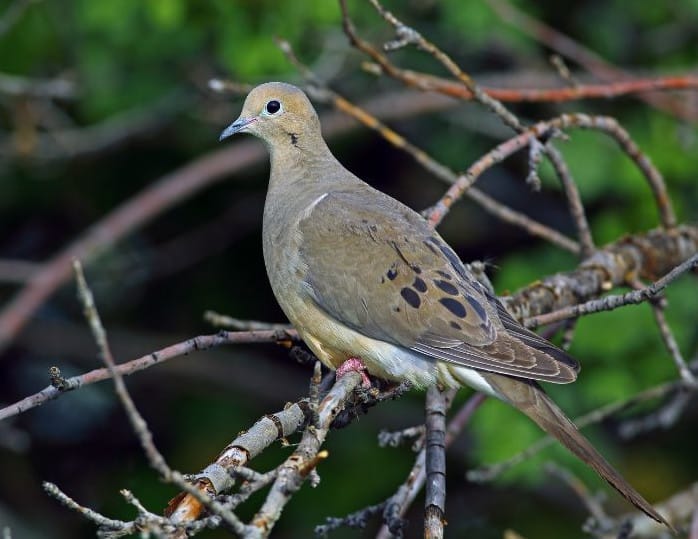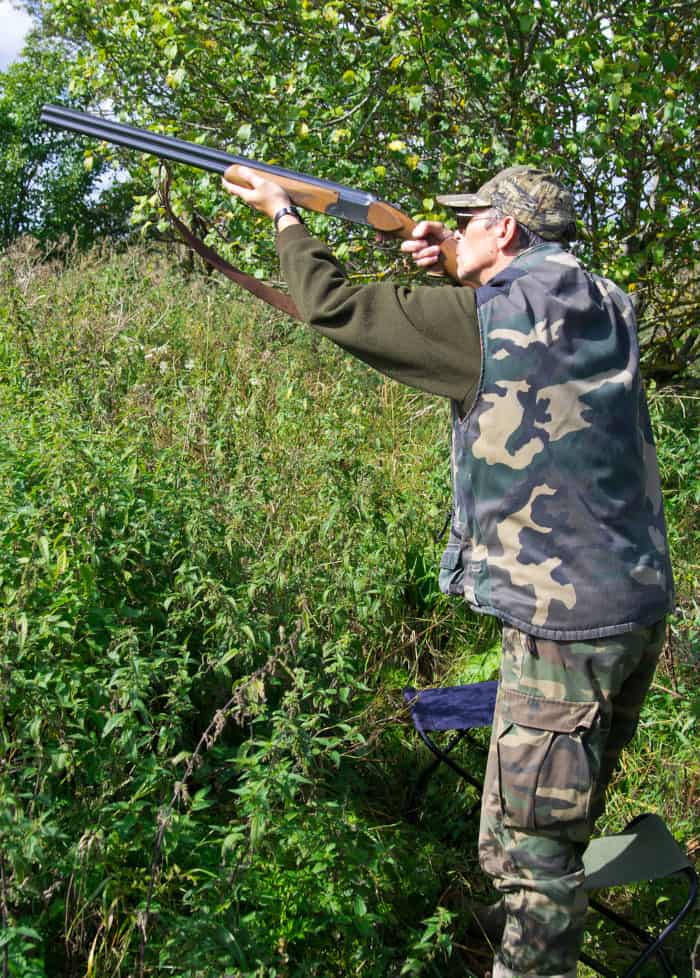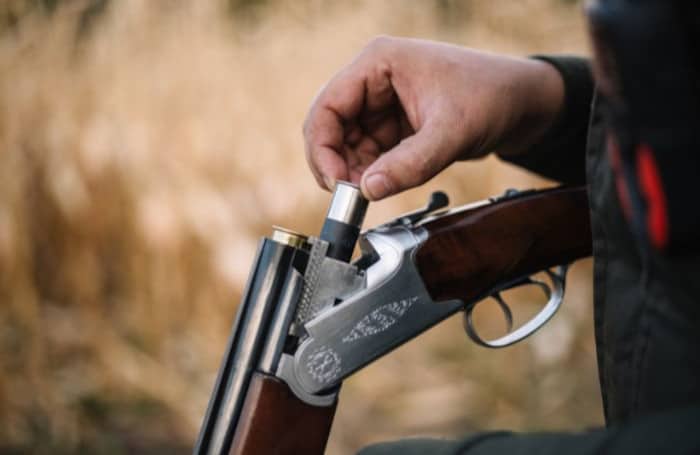Around the middle of August, wing shooters start preparing for the upcoming dove season. Shotguns will be cleaned and oiled up, camo clothing will be unpacked, and the serious hunters will try to get in a few practice rounds of skeet or sporting clays. Just before the dove season starts, I see first-time hunters at my day job, stocking up on dove hunting gear. Inevitably, one of the questions asked has to do with the ideal clothing for dove hunting, but another commonly asked, and related question is can doves see color?

As a child, dove hunting was my first introduction to the sport of wing shooting. Although I was too young to carry my own shotgun then, my father and his brothers would let me take a few shots under strict supervision. After my first dove hunt, I was hooked! I eagerly looked forward to Labor Day weekend in central North Carolina when dove season opened. My love of wing shooting also led me to hunt quail, mountain grouse, woodcock, and the occasional pheasant out of state. However, dove season remains one of my favorite hunting activities.
Dove Eyesight Basics
Like most North American bird species, all species of doves have excellent vision. Their vision is acute enough to identify small food items (usually seeds) while flying along at speeds of 50+ miles per hour.
Research indicates that, due to their eye location, doves have a 340-degree field of view. And, unlike a dove’s distant relative, the pigeon, who has issues with depth perception, nearly all species of doves have very good depth perception.
Because doves rely on their eyesight as a primary means to detect danger, they are extremely good at detecting even the smallest amount of movement. While dove hunting, the hunter’s movement is usually what doves pick up on first, causing them to flare away or change course to avoid the perceived predator.
Are Doves Able to See Color?
Not only are all species of doves able to see color, but a 2007 study found that they can also see more colors in the color spectrum than a human. The portion of the eye associated with color detection is called cones. Humans have three cones, allowing us to see reds, blues, and greens. Birds, including all species of doves, have four cones allowing them to see colors invariable to the human eye. Doves are able to see blue, green, and red but can also see ultraviolet colors. So not only do doves possess superior vision compared to a human, but they can also see colors in the UV spectrum that we can’t.
In addition to being able to see a broader spectrum of colors, the additional cone in a dove’s eye also offers wavelength filtering allowing them to see the differences or contrast in color changes. Although their vision isn’t quite up to being polarized, it’s pretty darn close. The enhanced contrast is believed to assist doves in detecting movement, identifying predators, and identifying food sources on the ground.
What Should I Wear Dove Hunting?
While blaze orange or hunter orange safety clothing certainly has its place in most hunting scenarios, out in a dove field is not one of those situations. Doves can certainly detect the color orange (quite well), and the contrast between orange and a darker background would likely make the hunter easily identifiable.
If you are having trouble figuring out what to wear on your first dove hunt, you might want to check out this related post: What to Wear Dove Hunting.
While complete camouflage clothing isn’t really necessary, I would recommend wearing darker-colored or drab-colored clothing in an effort to help blend in with the background being hunted. I prefer to wear camo pants, a camo shirt, and a camo hat with a wide brim to help block out the sun.

Some dove hunters go the extra mile and wear either a face covering or face paint in an effort to make their face less visible. Personally, I don’t wear a face covering for early-season dove hunting but do while hunting late season doves.
Late season doves are far warier of hunters and movement and will flare away or flee at any movement or strange objects in their flight path. I find that dove decoys are more helpful during late-season hunts compared to opening day hunts.
FAQS
Here are some frequently asked questions related to dove hunting and a dove’s eyesight:
Do doves have good eyesight?
As I mentioned above, all species of doves have excellent eyesight with color contrast and very good depth perception. The color contrast aspect of their vision allows them to identify even slight movement as a predatory defense mechanism. In addition, their vision is acute enough to perceive predators or threats due to color contrasts that are not visible to the human eye.
Do I have to wear orange or blaze orange while Dove hunting?
First, I’d check the specific dove hunting regulations for the state where you’ll be hunting. It’s possible that your state may have regulations that mandate blaze orange safety clothing while dove hunting. However, since doves can see color, I’m not aware of a state that does mandate hunter-safety clothing during dove season.
Assuming that your state does not have a rule or regulation in place mandating hunter-orange clothing, I’d suggest not wearing any blaze orange while dove hunting. Doves are not colorblind and can see orange quite well. Wearing orange on a dove hunt could decrease your odds of a successful hunt.

Born and raised in the North Carolina foothills, Andy was introduced to the outdoors at a very young age. Like most beginning hunters, he started out hunting small game like rabbits and squirrels, then graduated to larger species like Whitetail Deer. Although he’s an avid deer and turkey hunter, he still enjoys hunting small game as well. Andy has worked in the hunting and fishing industry for nearly 25 years.





